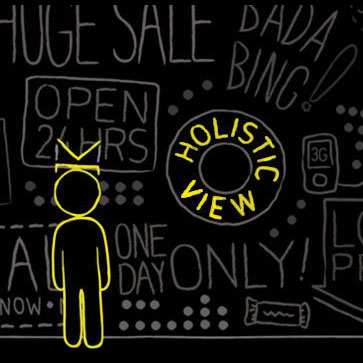The Programmatic Ecosystem: Not Perfect But Still a Smart Investment

By Craig Teich, Connexity
Although a couple of publishers have made recent headlines by backing away from participating in the programmatic ecosystem, they will find themselves members of a tiny minority. Why? There is a lot to like about programmatic and marketers will continue to shift budgets to programmatic as they uncover it's potential.
For example, programmatic technology is making it easier than ever to seamlessly connect consumer insights to actual media programs. There no longer needs to be a disconnect between a marketer's insights team, which identifies their best potential customers, and the media activation team that buys and targets media based on these insights. Instead, consumer insights can be directly linked into audience management systems and become the basis for finding customers programmatically online. Properly leveraged, data opens the opportunity for true one-to-one marketing. Some programmatic platforms are capable of evaluating and targeting audience members on an individual basis. Advertisers don't have to buy standard one-size fits all audience segments that aren't a perfect fit for their brand. Instead, programmatic audience systems can prioritize targeting ad impressions to audience members that are the best fit for the advertiser. Ad creative can also be dynamically adapted to the person's interest - so you can deliver the right message to the right person at the right time.
In addition, programmatic eliminates many of the manual cycles (and delays) of manual transactions. As campaigns run, data science can interpret what signals matter most and optimize a marketer's campaign almost instantaneously. Programmatic campaigns can be optimized by audience, site, ad size, position on the page and more. In the days before programmatic the agency or advertiser would manually evaluate campaign performance, contact the publisher to ask for optimizations which the publisher would then execute. Now with programmatic, technology captures performance data and optimizes campaigns in real-time; thus eliminating the need for time consuming back and forth between the advertiser and publisher.
Even still, the major challenges facing marketers across all online media, also exist in the programmatic space. For example:
Accurately attributing performance to the ads that influence performance remains difficult. As campaigns optimize across devices how can marketers be sure they are giving credit where credit is due? They want to focus ads on the best performance, but how does programmatic fit in best with their mobile, search, social offline campaigns etc.?
Viewability is also a lingering challenge for the industry. Marketers want to make sure their ads are they displayed in placements where the viewer can see them, but viewability doesn't necessarily lead to performance. Some of the best-performing placements on a campaign may have low viewability but still deliver a highly qualified audience who drives the advertiser's key performance indicators (KPIs). Optimizing campaigns on viewability alone is too simplistic of an approach. Instead, viewability should be one of many considerations when optimizing campaigns toward the best possible performance.
In addition, some fear that since marketers are not negotiating with a human in programmatic exchanges, they could be buying ads on sites that only have bot traffic or that the targets demand-side platforms are bidding on may actually be bots in disguise. Still, it is important to remember that bot fraud isn't limited to programmatic. One way marketers can reduce the risk of bot fraud without hiring an ad verification company, is to target audiences with rich data profiles. If there are multiple data points on an audience member from a range of online activity, then there is a lower risk that the ad will be shown to an impression bot. If marketers don't have confidence in the data that they are using to target their campaigns, then at that point they may want to contract with an ad verification vendor.
These challenges, however, are only minor obstacles that pale in comparison to the potential of programmatic. There should be no doubt that the marketing and ad tech communities will continue to find solutions and uncover new opportunities to deliver value through the programmatic ecosystem.
Craig Teich is the senior vice president of sales and business development at Connexity, where he brings 14 years of digital advertising experience.









